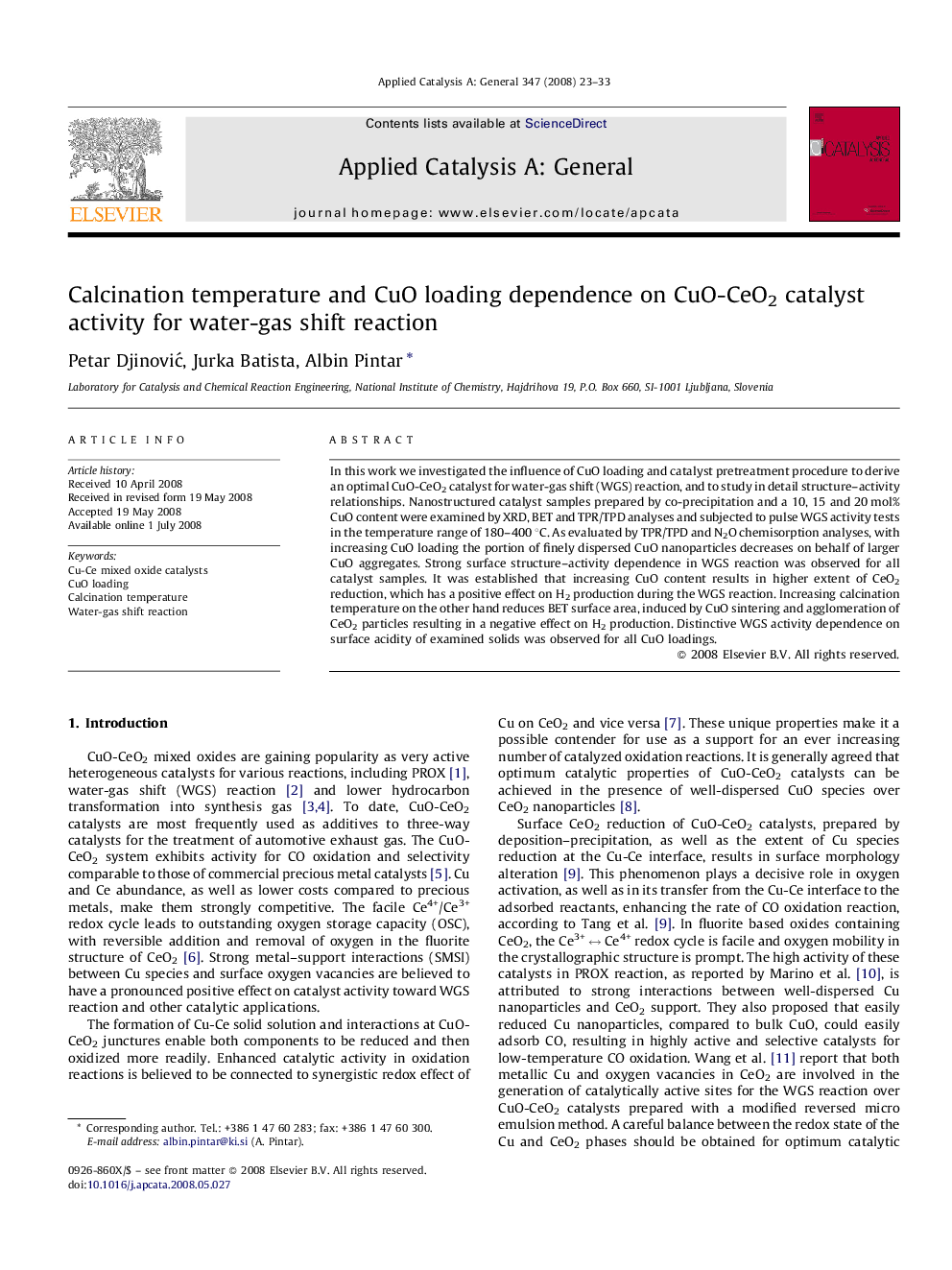| Article ID | Journal | Published Year | Pages | File Type |
|---|---|---|---|---|
| 42888 | Applied Catalysis A: General | 2008 | 11 Pages |
In this work we investigated the influence of CuO loading and catalyst pretreatment procedure to derive an optimal CuO-CeO2 catalyst for water-gas shift (WGS) reaction, and to study in detail structure–activity relationships. Nanostructured catalyst samples prepared by co-precipitation and a 10, 15 and 20 mol% CuO content were examined by XRD, BET and TPR/TPD analyses and subjected to pulse WGS activity tests in the temperature range of 180–400 °C. As evaluated by TPR/TPD and N2O chemisorption analyses, with increasing CuO loading the portion of finely dispersed CuO nanoparticles decreases on behalf of larger CuO aggregates. Strong surface structure–activity dependence in WGS reaction was observed for all catalyst samples. It was established that increasing CuO content results in higher extent of CeO2 reduction, which has a positive effect on H2 production during the WGS reaction. Increasing calcination temperature on the other hand reduces BET surface area, induced by CuO sintering and agglomeration of CeO2 particles resulting in a negative effect on H2 production. Distinctive WGS activity dependence on surface acidity of examined solids was observed for all CuO loadings.
Graphical abstractIn this work we investigated an influence of CuO loading and catalyst pretreatment procedure to derive at an optimal CuO-CeO2 catalyst for water-gas shift (WGS) reaction, and to study in detail the structure–activity relationships. The results of activity measurements and catalyst characterization by means of temperature-programmed techniques demonstrate that WGS activity of CuO-CeO2 catalysts synthesized by means of co-precipitation is influenced by CuO dispersion, extent of surface CeO2 reduction and surface acidic properties.Figure optionsDownload full-size imageDownload as PowerPoint slide
